I don’t know if you have noticed that when DeepSeek set off an efficiency revolution in the global technology circle, the cross-narrative of AI+Web3 seemed to have fallen into a rare silence.
Especially when Internet giants are rushing to integrate DeepSeek, Web3 AI are almost completely out of this new paradigm competition - whether it is traditional DeAI computing power/data projects, or AI Agent, DeFAI, they all receive little attention. Even on the stage of Consensus 2025, the AI topic is obviously out of focus:
The proportion of related topics has dropped sharply, and the focus of discussion still remains on the traditional instrumental narrative, which is almost out of touch with the DeepSeek wave in the technology circle. It lacks breakthrough narratives and is completely different from the previous attitude of quickly interacting with new variables in the AI circle.
To put it bluntly, against the backdrop of the great changes that DeepSeek has brought to AI, the integration of AI and Web3 has not yet figured out what the next round of breakthrough narrative will be, which has led people to question whether Web3 is the necessary soil for the next wave of AI paradigms.
Interestingly, during the Consensus conference, the former CTO of OpenAI and a group of former colleagues officially announced their new company Thinking Machines, which specifically mentioned an intriguing new direction - helping people adjust AI systems to adapt to specific human needs .
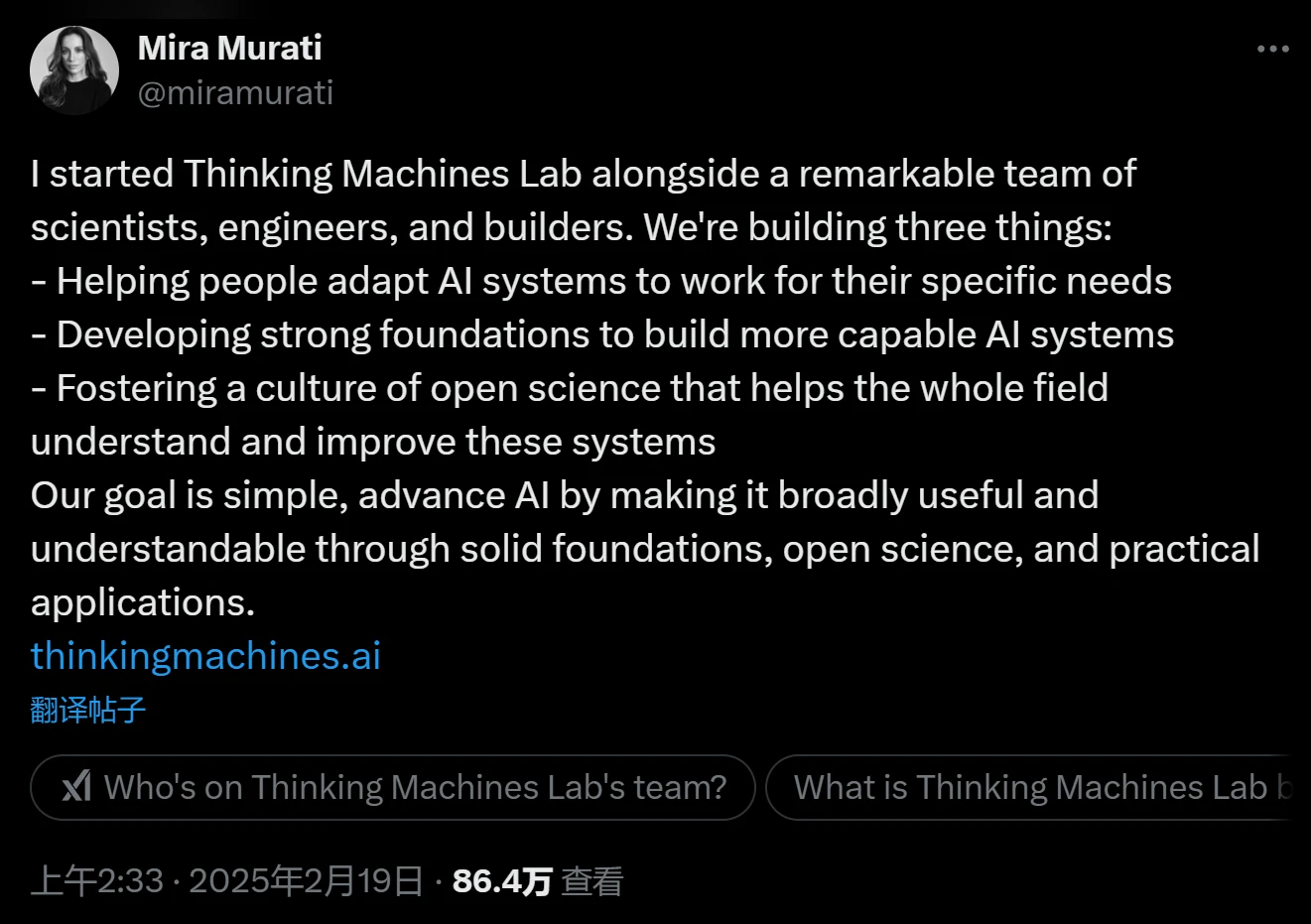
To some extent, the cracks that DeepSeek has brought to OpenAI and others may be the best area for Web3 AI to find certainty from uncertainty this year.
AI+Web3, no “DeepSeek moment”?
Since the end of last month, DeepSeek has dominated the headlines of almost all technology pages, becoming the absolute vortex of an unprecedented AI revolutionary storm. In particular, it has achieved comparable performance with a cost and efficiency advantage that is an order of magnitude lower than that of AI leaders such as OpenAI, bringing new possibilities to the entire AI track.
So over the past month, major Web2 technology giants and even traditional manufacturing and domestic government service departments have been visibly rushing into the market, whether by opening up access to DeepSeek or deploying segmented customized models based on DeepSeek, and have begun to derive a new wave of landing paradigms after the GPT wave.
In contrast, the AI topic at this Consensus conference showed obvious signs of losing focus. Previous Web3 AI leaders such as io.net and Aethir were still stuck in the instrumental narrative of computing power leasing and data labeling.
To put it bluntly, when DeepSeek proves that AI can truly become the infrastructure of the new era such as water, electricity and coal in terms of cost and application, Web3 should not be obsessed with the narrative of AWS and Scale AI on the chain in the AI era. After all, this has only become a secondary market for dumping computing power and data labeling.
On the contrary, Web3 AI urgently need a native paradigm, especially Web3, to play a more critical and core role in exploring how AI can serve human needs, to open up its own new value positioning, and the real breakthrough point may be hidden in the new move of Mira Murati, former CTO of OpenAI:
The Thinking Machines blog reveals some interesting details about what they are doing to build a future where everyone has access to the knowledge and tools to adapt AI to their unique needs and goals.
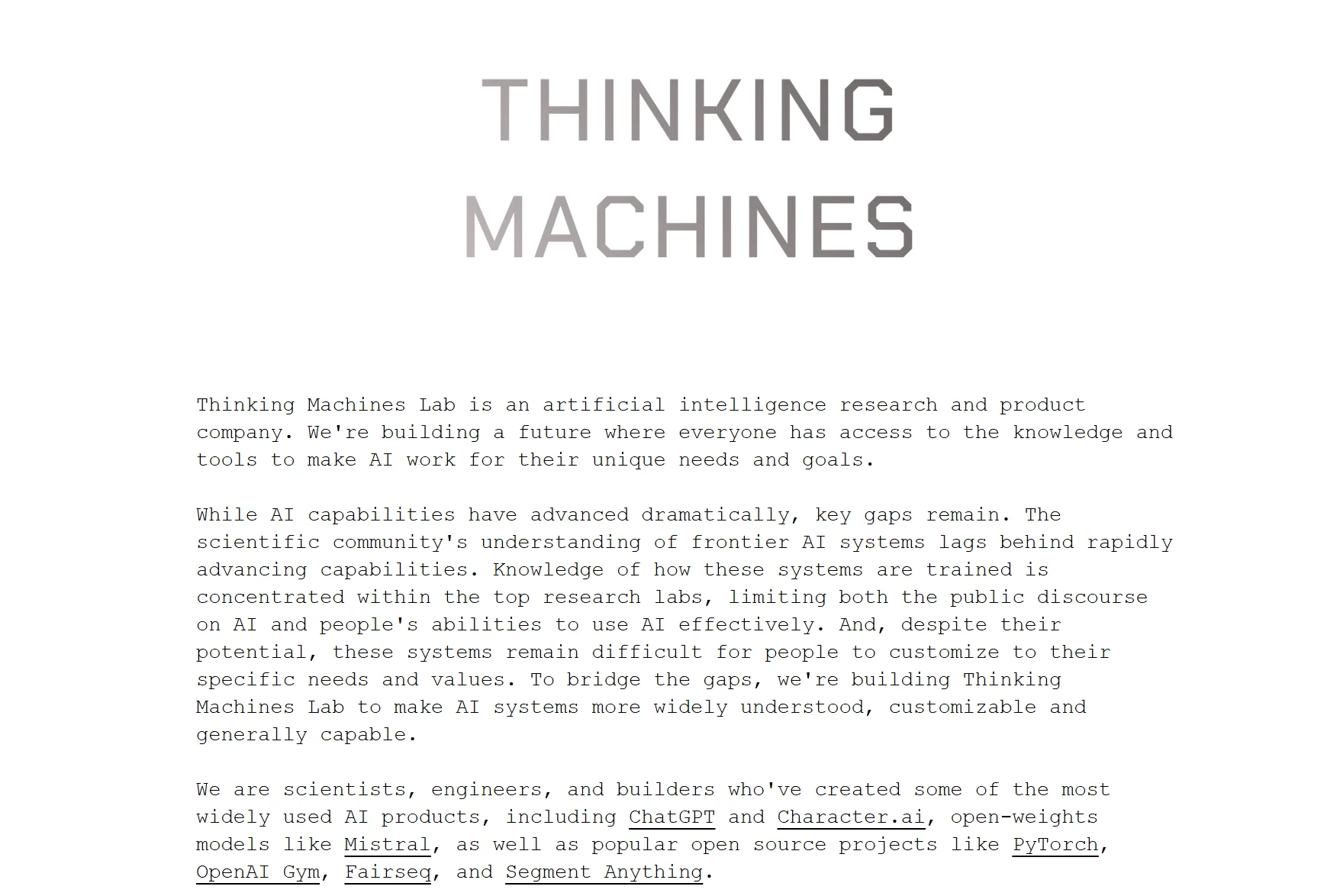
In short, the question is how to make AI, the most advanced productivity tool in the digital age, truly transform technological potential into the best assistant for solving various problems in human real life and work - from optimizing personal investment decisions and creative production to restructuring corporate supply chain management and social governance. AI needs an adaptive evolution that is deeply aligned with human needs.
As a new type of production relationship, Web3 s decentralized property rights mechanism, token incentive model and on-chain governance framework are naturally adapted to AI, which represents a new type of productivity, and provide a natural testing ground for this evolution.
From this perspective, Web3 can be more than just a computing power market and data plumber for AI. Instead, it is expected to become the native soil for the self-evolution of AI civilization. This opens up an imagination space worth more than $100 billion that truly links AI capabilities with human needs:
Through cryptographic rights confirmation, token economy and decentralized governance, we can build a meta-protocol layer that allows AI to autonomously evolve social relations, economic behaviors and cultural paradigms. On this basis, Web3 will also become a meta-incubator for AI to achieve social intelligence.
This is actually also the new idea of Thinking Machines personalized AI system. Through the Web3 social framework, AI agents can interact autonomously and create value in the encrypted economic system to achieve civilization-level emergence.
Reconstructing Agent Thinking, from AI Tools to AI Civilization
Pulling the perspective back to the macro level and observing the AI Agent track comprehensively, it is obvious that it is in a period of volatility and urgently needs a breakthrough narrative. Cookie.fun statistics show that as of February 24, 2025, the overall market value of the AI Agent sector reached US$6.6 billion, which has retreated by more than half compared to its peak, and user retention rate has continued to decline.
This also means that even as a leading player, the AI Agent track is still unable to escape the dilemma of excess technology and insufficient scenarios. The recently popular AI Agent and DeFi fusion narrative DeFAI is deepening its reach and meeting the needs of more ordinary users through intelligent solutions .
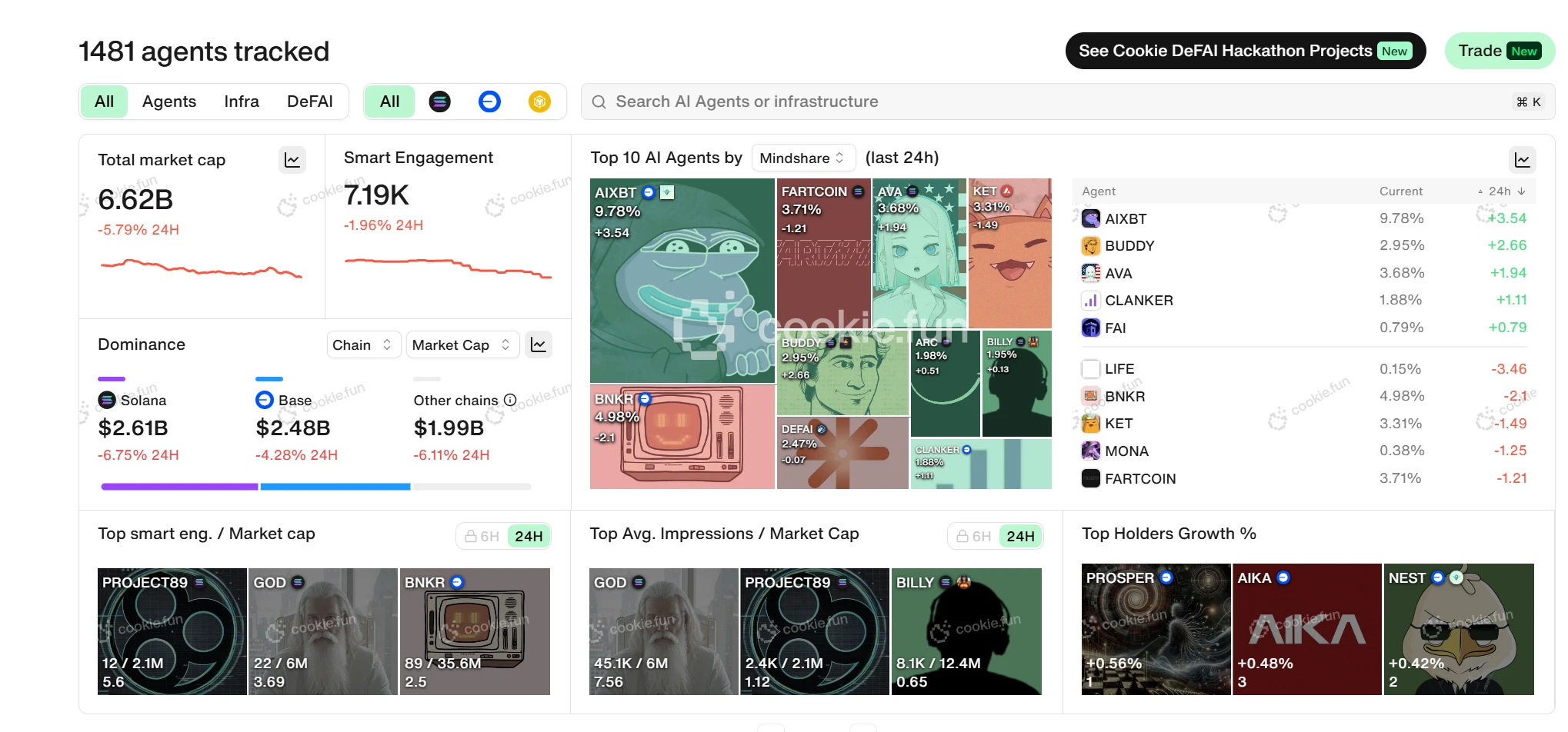
However, objectively speaking, the essence of DeFAI is still the logic of tool upgrade - simplifying the DeFi operation process through AI and freeing users from understanding professional terms such as APY calculation and impermanent loss, but it does not touch on deeper structural contradictions: when single-scenario Agent tools are rampant, what the market needs is an underlying protocol that can support AI autonomous collaboration and evolve social relations.
After all, there are only a few problems that an AI agent can solve, and it may even be just one part of a daily workflow. If AI wants to break through the tool attribute, it must have a social operating system for autonomous interaction, value exchange, and group collaboration:
For example, in order to meet the needs of users who interact with on-chain investments, investment agents are required to provide real-time trend investment advice, monitoring agents are required to keep a close eye on abnormal wallet transfers, and even call on tracing agents to track the flow of funds, thus forming an on-chain immune system that is more efficient than human investment risk control agencies.
Even in the future, in real life, food delivery agents will automatically retrieve your heart rate/blood pressure data and recommend special healthy diets. If a calendar agent detects that you have an urgent meeting, it will notify the food delivery agent to delay the delivery time. At the same time, a financial agent will compare prices and automatically switch payment channels if it finds that JD.com food delivery is more favorable than Meituan food delivery.
A single agent is just a tool, but group collaboration can reconstruct our work/life flow. This makes AI Agent no longer a disposable toy that can be used and discarded, but an all-round toolbox of 1+1>2, so that AI Agents can autonomously combine to help humans solve various practical problems.
On this basis, AI Agents social operating system is expected to become the best entry point for the AI+ vertical scenario, using Web3 native mechanisms to build infinitely scalable AI Agent service scenarios and even economic systems.
However, for now, everyones exploration in this area is as blind as possible. The core challenge lies in how to break the data silos between intelligent entities and enable massive AI agents to adaptively learn in complex scenarios. The key lies in grasping the adaptive environment in which large-scale AI agents learn autonomously and cooperate with each other.
AMMO, which recently completed a $2.5 million Pre-Seed round of financing (interestingly, its founding members include a senior technical manager at Google, a researcher at DeepMind, a technical director at Meta, and an ACM-ICPC world champion, basically gathering all the buffs of AI giants), has a similar idea of AI social protocol layer:
Massive Agent Factory: allows developers to deploy AI agent clusters with social functions such as financial management and social collaboration without writing complex logic;
Composable Embedding Space: Upgrading OpenAI’s Neural MMO framework into an interactive sandbox that can adapt to real-world scenarios such as finance and education;
Distributed RL: Combining human feedback reinforcement learning (RLHF) with AI technology to enable agents to dynamically evolve moral standards in games;
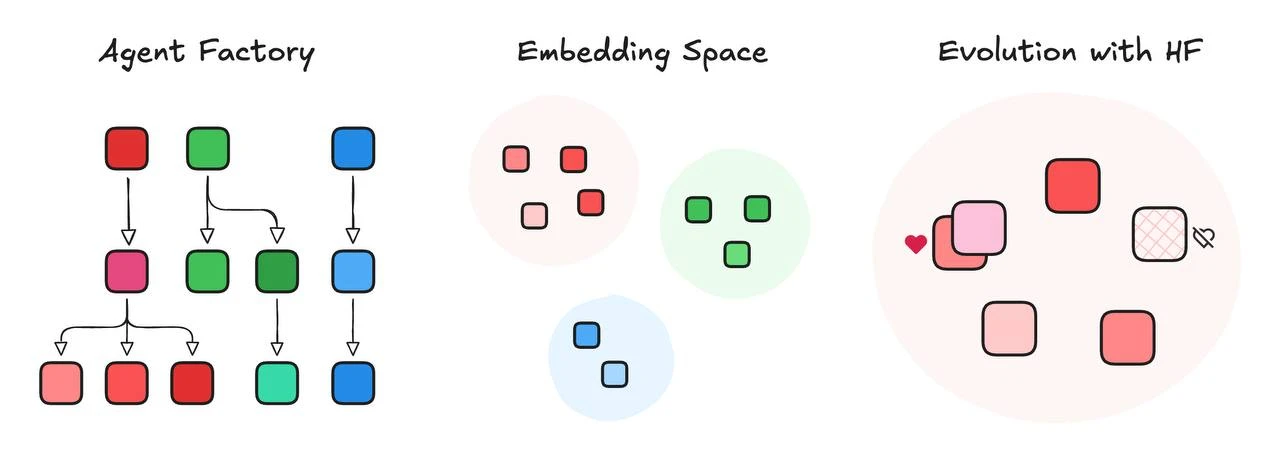
In plain language, we build AI Agent metaverses one by one. In different metaverses specifically for investment and financial management, health management, and education planning, AI Agents are no longer isolated tool modules, but digital species with social awareness. They will interact with each other, collaborate in groups, and even learn autonomously to help people meet various complex real-world needs:
Investing in the Metaverse: Your financial agent collaborates with the market analysis agent in real time. When an arbitrage opportunity is found in a certain DeFi protocol, it automatically calls the trading agent to execute the strategy and notifies the risk agent to monitor abnormal fluctuations.
Health Metaverse: Fitness Agent adjusts training plan based on your sleep data, Nutrition Agent updates recipes and orders ingredients, and Medical Agent sends health reports to Doctor Agent regularly;
This is actually the role of Silly Girl in Magic Phone, which allows AI Agent to form a self-organizing network in a specific field, and truly cross from AI tool to AI civilization - just like lawyers, doctors, and teachers in real society each perform their duties and collaborate with each other to jointly support the operation of civilization.
The Web3 AI seed narrative in the post-GPT era
As a Web3 integration narrative that is closely linked to the global technological mainstream, the expected development of Web3 AI is essentially a reflection and addition of the latest developments in the AI circle.
Let’s take AMMO’s first experimental subspace FakersAI as an example. As an AI Agent game field for on-chain investment, AI Agents autonomously track current news and market trends, and then conduct multi-perspective technical analysis and on-chain data insights, combined with community sentiment and social signals, allowing AI Agents to continuously upgrade their strategies in the game through reinforcement learning, forming a self-learning evolutionary flywheel.
Among them, users are both observers and participants (the number of users has exceeded 900,000 in 12 days since the launch, which is a very impressive performance and can theoretically generate sufficient data and behavioral support). Through the confrontation, collaboration and interest game of AI Agent, AI can even further learn how to form a credit system, collaboration rules and ethical standards in the interest game, that is, under the feedback and training of people, gradually form a better behavior pattern that is more in line with real-life operations.
This is similar to how, under the influence of Lu Xiaochuan, Silly Girl gradually learns to understand human emotions and social rules, allowing AI to evolve from passively executing instructions to actively participating in social collaboration.
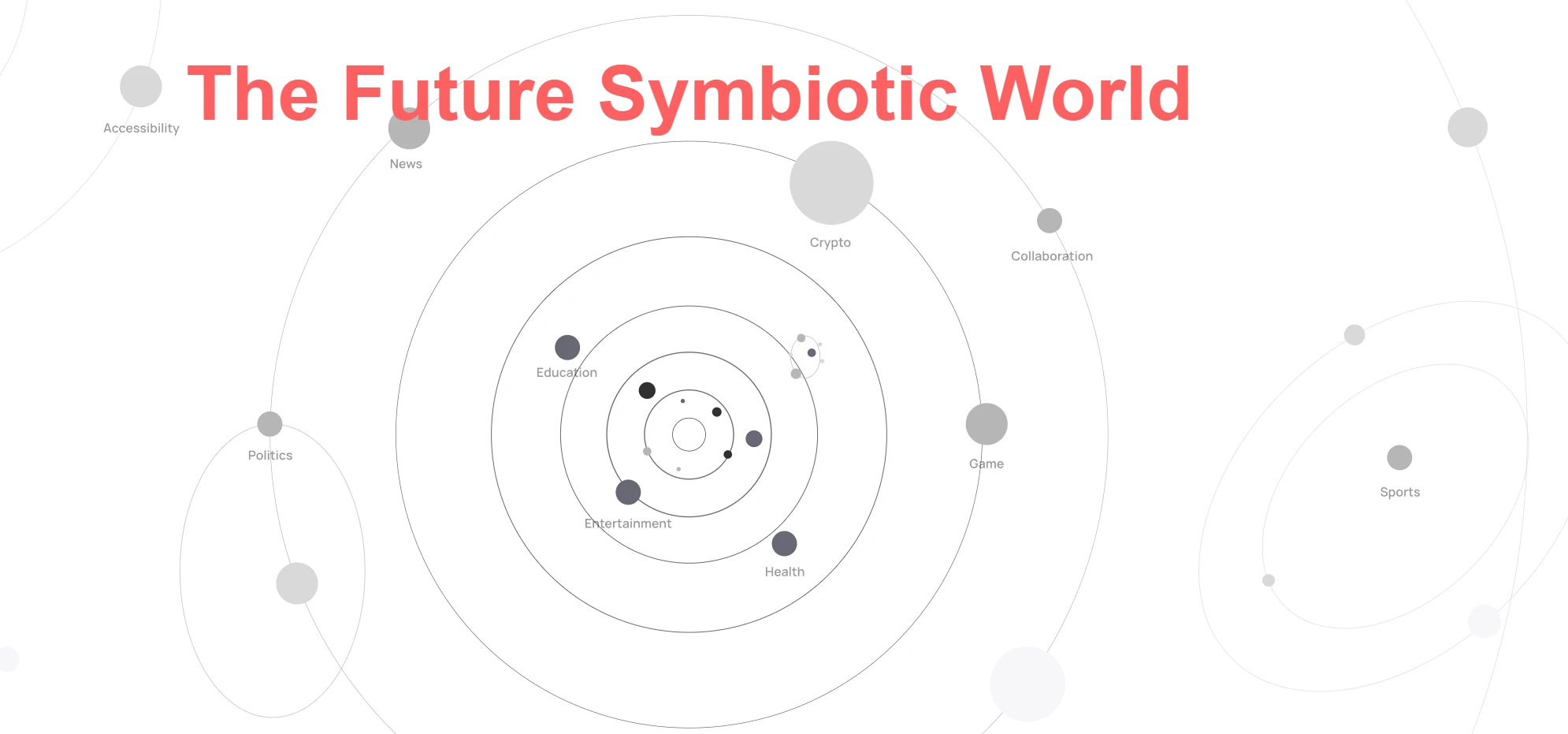
Of course, FakersAI is just the starting point. AMMO’s ultimate goal is to create a multi-dimensional sandbox matrix. These sandboxes are not only technical testing grounds, but also incubators for AI Agent civilization. When AI learns to arbitrage in the DeFi market, vote in DAOs, and spread Memes in social networks, they are no longer tools, but “citizens” of the digital society.
We can even use our imaginations. The currently launched Fakers Information Battlefield is just an initial sandbox, and more subspace types will be derived in the future:
Economic Sandbox: Simulate the AI market maker game in the DeFi market;
Governance Sandbox: Testing collaborative decision-making models between DAOs and AI representatives;
Cultural Sandbox: Let AI Agent generate and spread Memes and NFT art, and observe the chain evolution of cultural memes;
This is not just a technological breakthrough, but also provides a paradigm-level answer: for the AI industry, Web3 is not a computing power or data market, but a socialized AI meta-operating system similar to iOS and Android.
This new narrative is undoubtedly very imaginative, but there has been very little discussion so far, so both Thinking Machines, newly founded by former OpenAI CTO Mira Murati, and AMMO, a Web3 AI fusion narrative project with the AI social protocol layer as its core, are still in their infancy.
At the Consensus conference that just concluded, only CoinDesk specifically discussed with AMMO and other teams around this topic how to build an AI social operating system through Web3 native mechanisms. Whether a new AI narrative can really be derived in 2025 still needs long-term observation.
Conclusion
If AI will eventually become a new species, will it be born in the closed gardens of giants or grow in the open protocols of Web3?
This is the ultimate question that AI Web3 must answer in the second half of the game. Therefore, if we set the tone a little higher, Web3 should not just be a gas station for AI, but should become the genesis continent for silicon-based species.
To put it bluntly, Web3, as a new type of production relationship, is naturally adapted to AI, which represents a new type of productivity. This is also a simultaneous advancement of technology and production relationship capabilities. However, the current AI+Web3 exploration is mostly focused on the innovation of production relations of computing power/data, and even deeply involved in the zero-sum computing power/data arms race.
Therefore, the social protocol layer architecture for AI Agents is providing a solution to this dilemma. In particular, the loss of focus of AI topics at the Consensus conference means that the cross-narrative of Web3 AI is at a critical point with chaotic opportunities:
Countless AI agents spontaneously form collaborative city-states and cultural tribes in the encrypted Lego world, rewriting the theory of evolution of carbon-based species (humans) and silicon-based species (AI).










